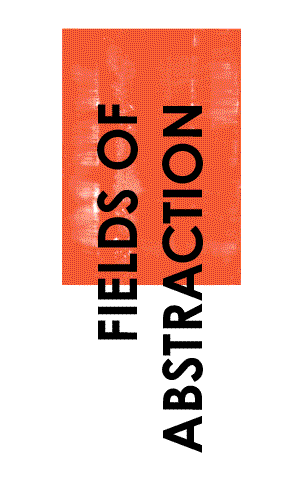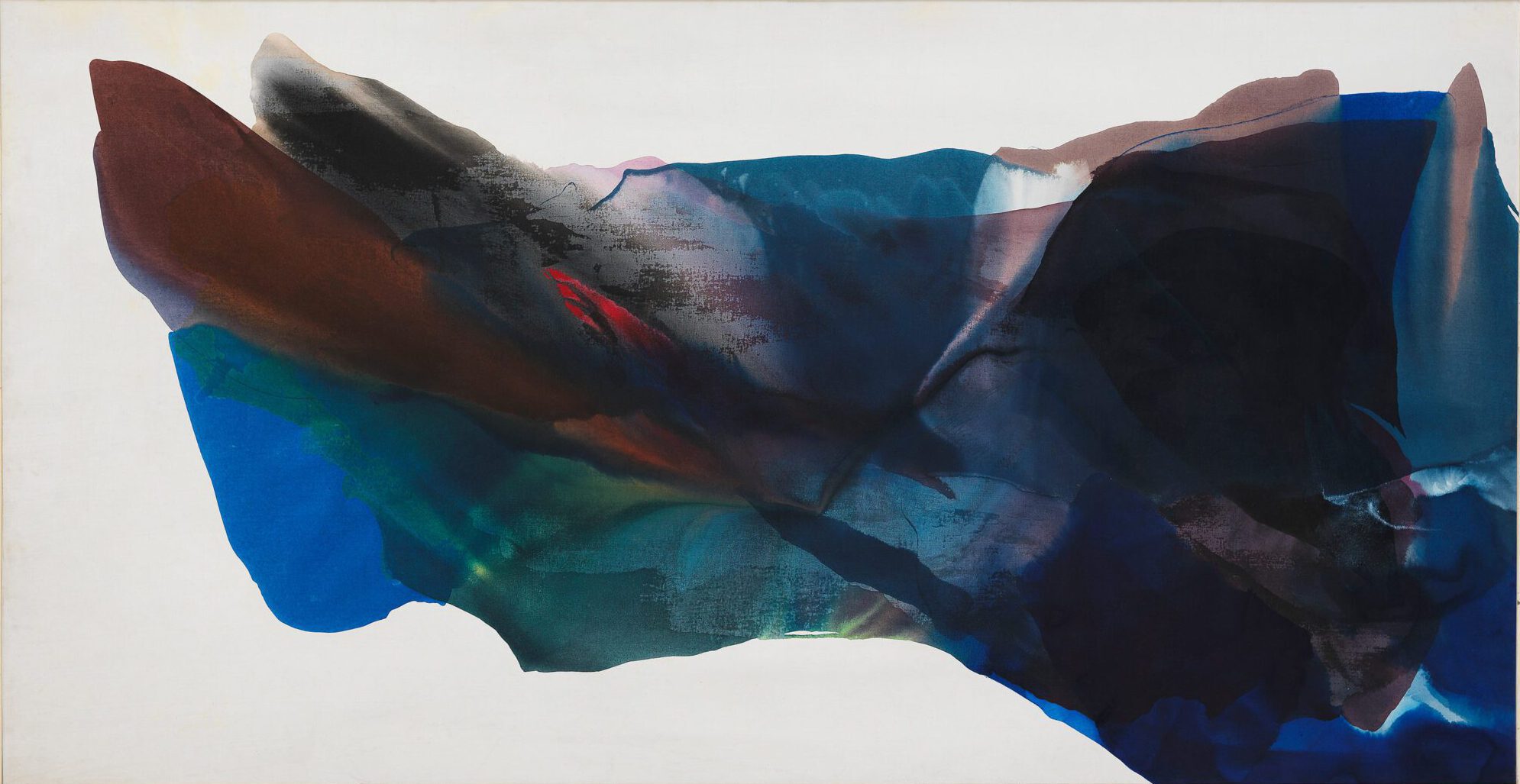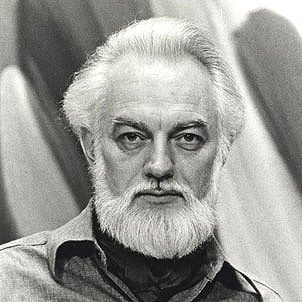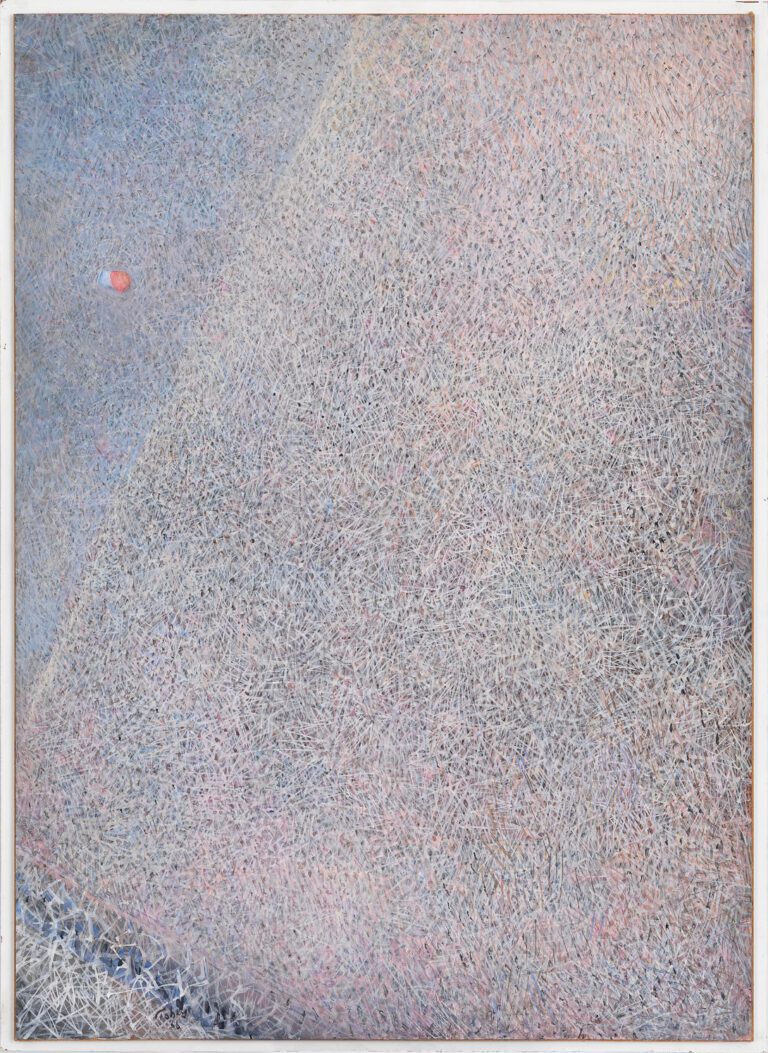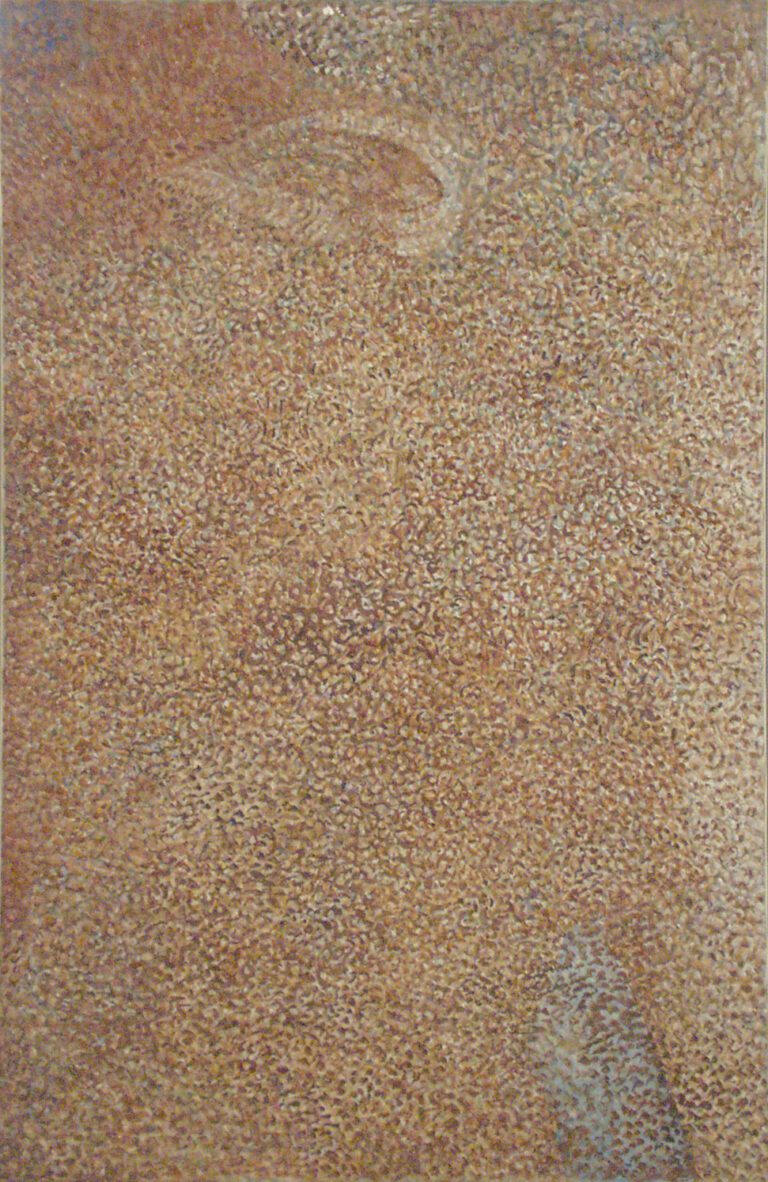A member of the New York School, Paul Jenkins worked at a ceramics factory in his youth, an experience that greatly influenced his tactile methods of painting. He was a close friend of Mark Rothko, and remained tied to the city even during his move to Paris in the 1950s. Ultimately associated with the Abstract Expressionists, Jenkins was inspired by the “cataclysmic challenge of Pollock and the total metaphysical consumption of Mark Tobey.”
Jenkins’s innovative practice was guided by his choice to avoid the paintbrush altogether. Gem-like veils of transparent and translucent color characterize his work from the late 1950s on. Allowing pigment to pool, bloom, or roll across the surface of his canvases, he would guide the paint with a knife to create fluid fields of color. Talking about his process, the artist said: “I do not stain and I do not work on unprimed canvas. This is more significant than it may appear. Staining or working on unprimed canvas results in an inkblot-like effect where the paint penetrates the canvas and spreads out on its own. When I work on primed canvas, I can control the flow of paint and guide it to discover forms. The ivory knife is an essential tool in this because it does not gouge the canvas, it allows me to guide the paint.” And: “With the smooth organic surface of the ivory, I could use great pressure against the sensitive tooth of the canvas.”
Jenkins had a longtime interest in Eastern religions and philosophy. He studied the ancient Chinese divination text I Ching (1000–750 BCE), as well as the writings of psychiatrist and psychoanalyst Carl Gustav Jung. Inward reflection and mysticism dominated his life and aesthetic.
Adina Kamien
